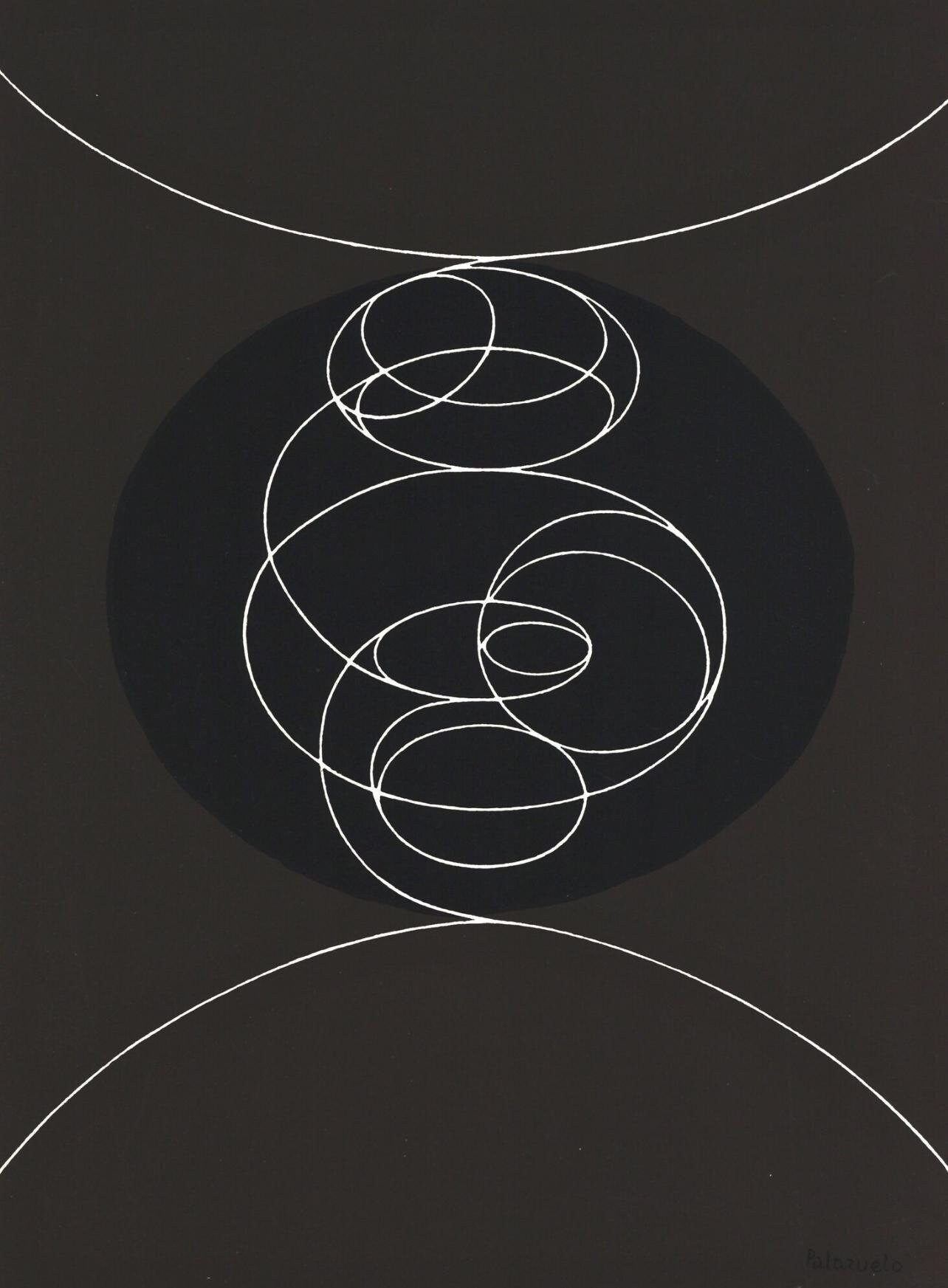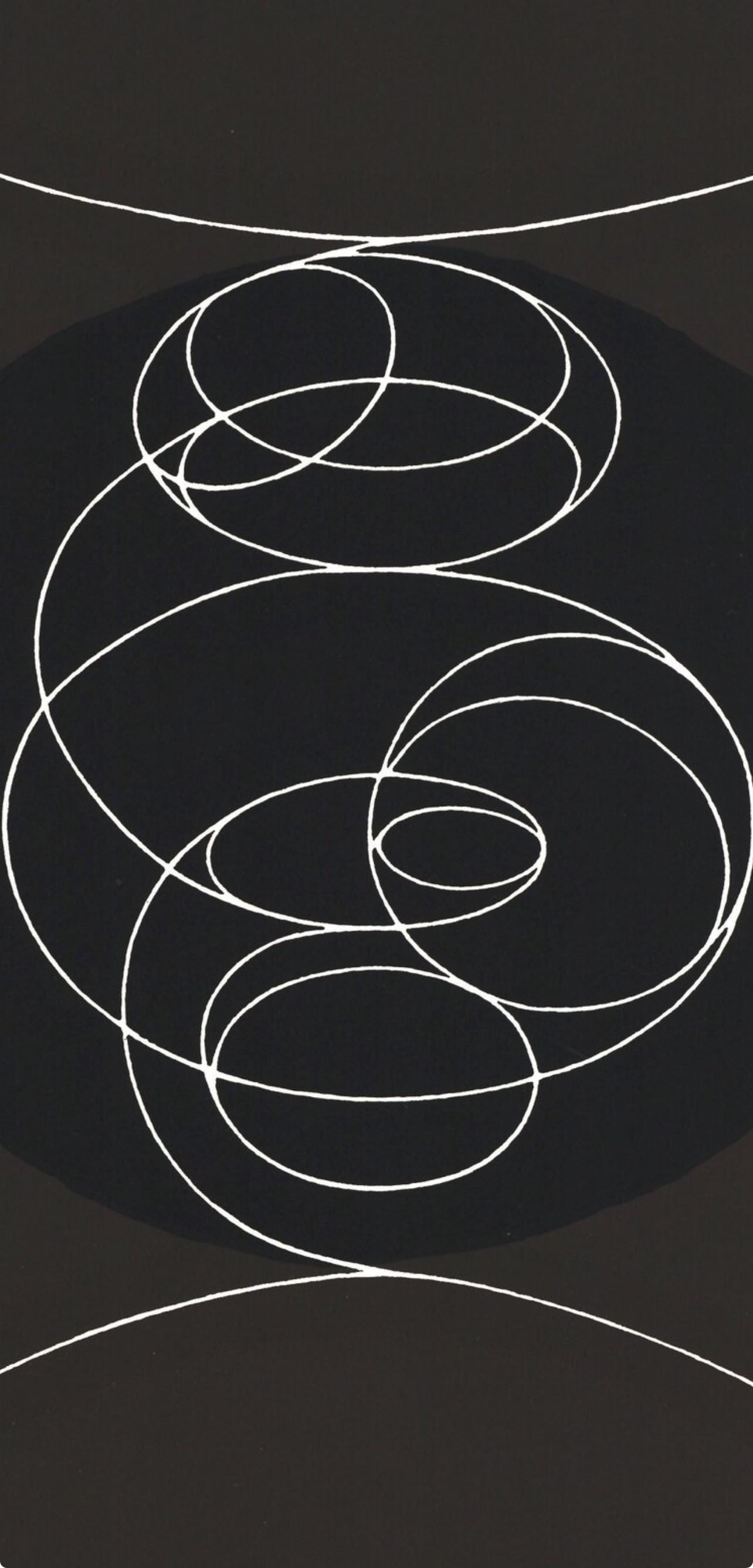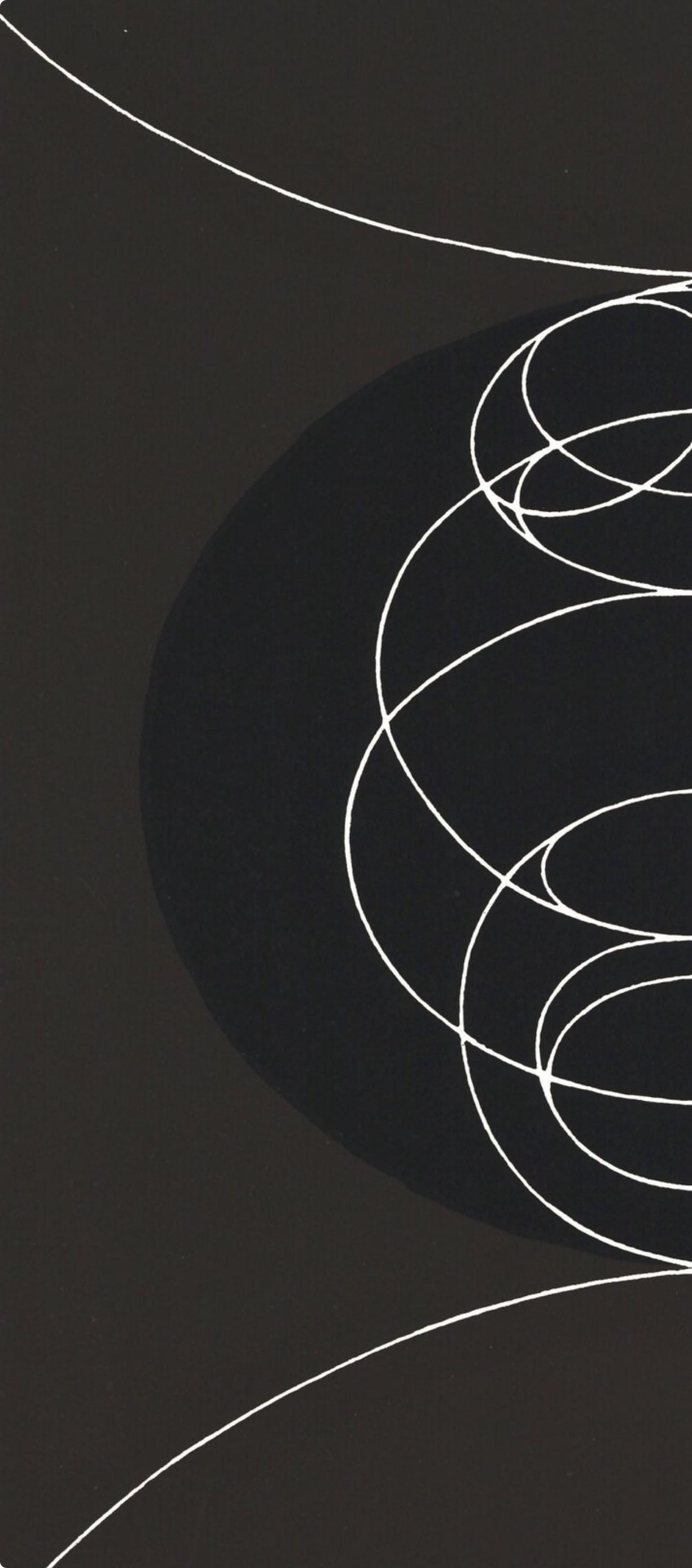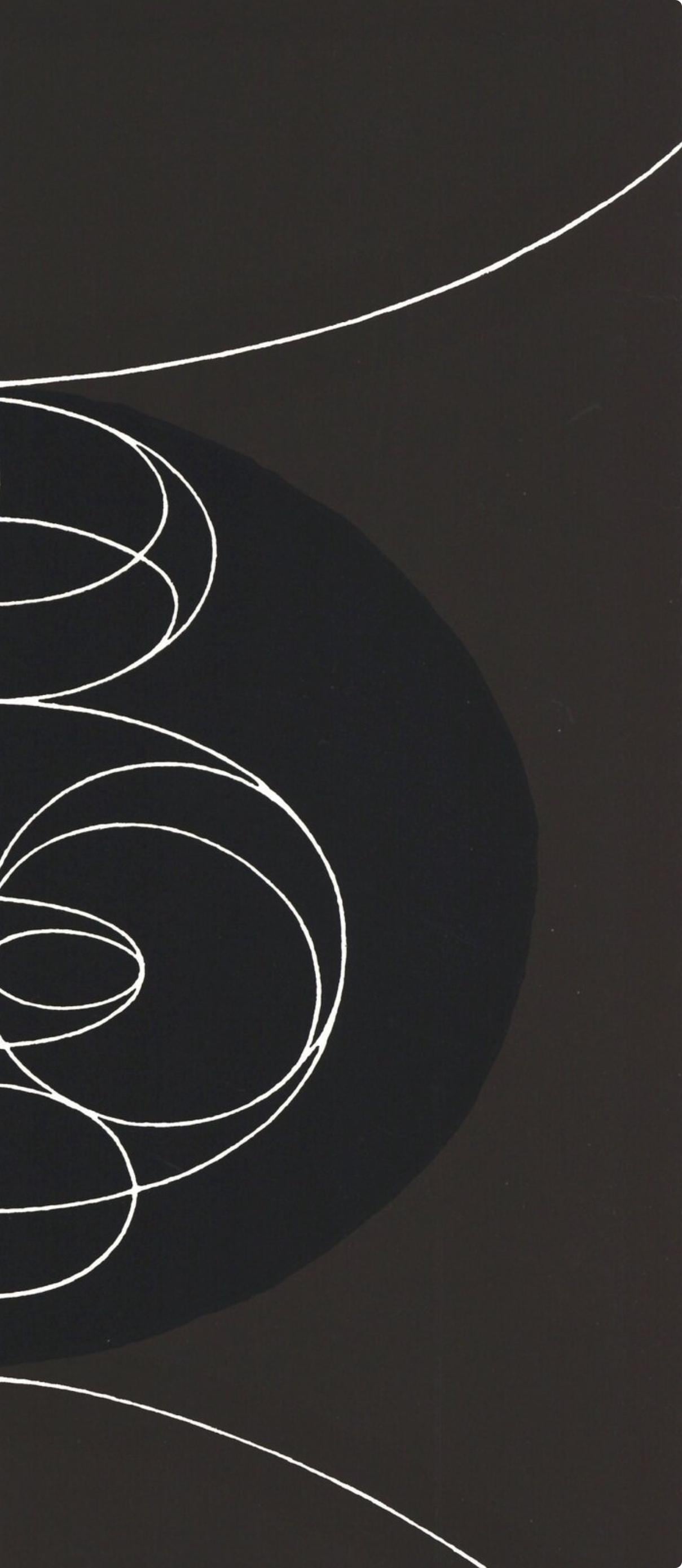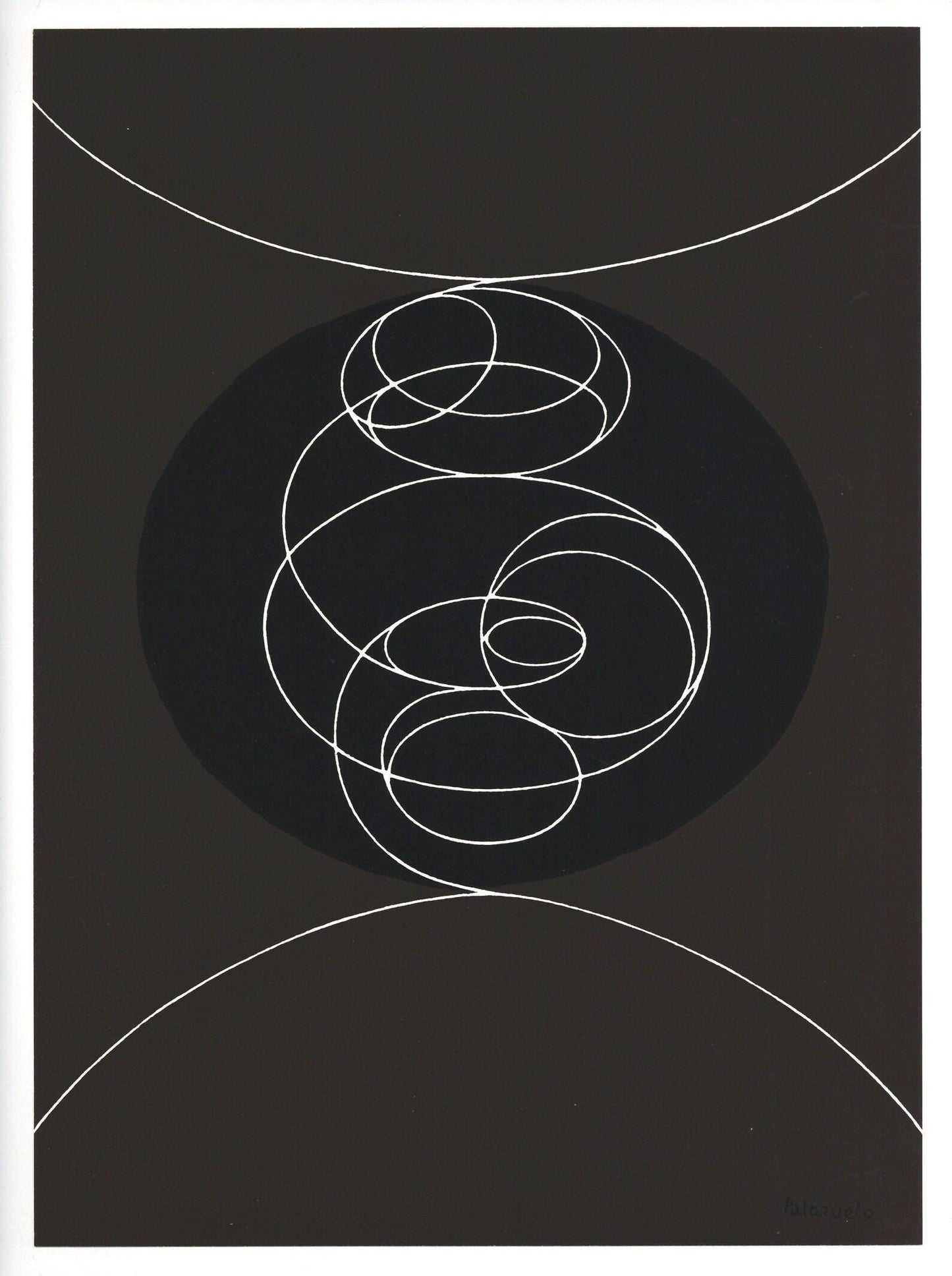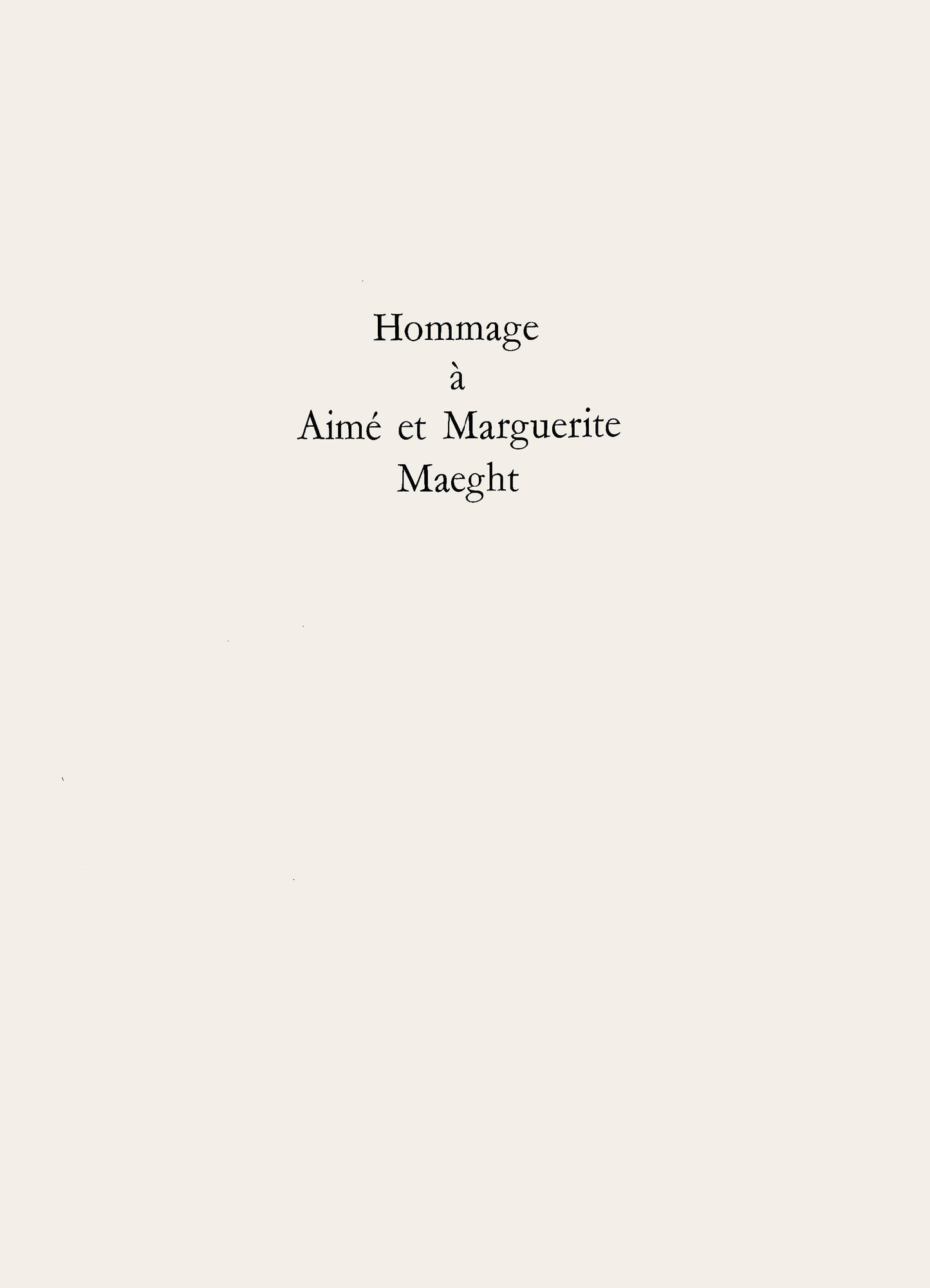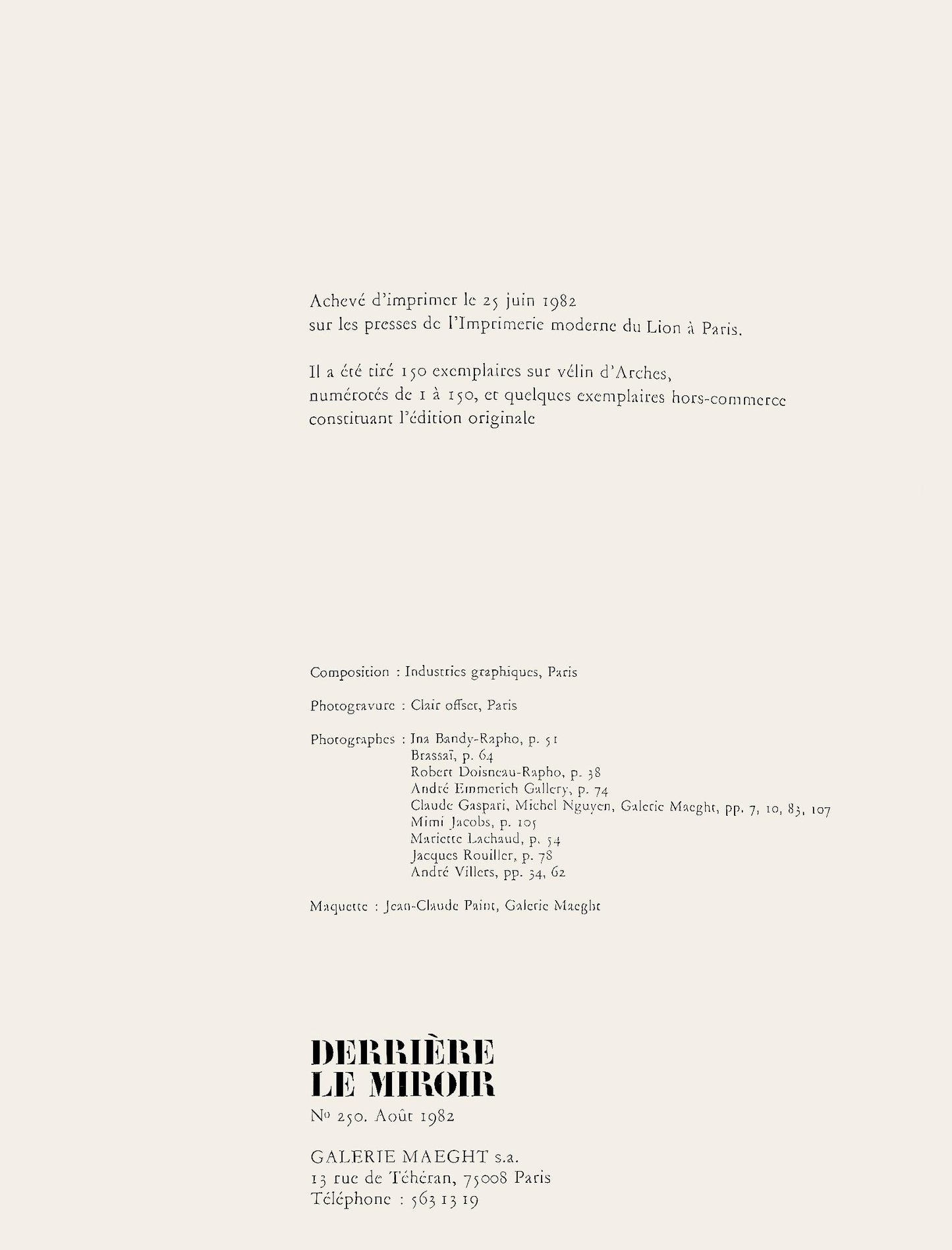1
/
of
7
Auction Ended: July 08, 2025
Post-Auction Sale Ends in:
Pablo Palazuelo, Composition, Hommage Aim Et Marguerite Maeght, Derrire Le Miroir, Lithograph
Pablo Palazuelo, Composition, Hommage Aim Et Marguerite Maeght, Derrire Le Miroir, Lithograph
Regular price
$523.95 USD
Regular price
$779.69 USD
Sale price
$523.95 USD
Unit price
/
per
Couldn't load pickup availability
Condition: Pre-Owned
Lithograph on vlin paper. Paper size: 15 x 11 inches. Excellent condition. Inscription: Unsigned and unnumbered, as issued. Notes: From Derrire le miroir, Hommage Aim et Marguerite Maeght, N 250, 1982. Published by Aim Maeght, diteur, Paris; printed by ditions Pierre Feu, Galerie Maeght, Paris. Excerpted from the volume (translated from French), Finished printing on June 2, 1982 on the presses of l'Imprimerie moderne du Lion Paris. It has been published 150 examples......
Lithograph on vlin paper. Paper size: 15 x 11 inches. Excellent condition. Inscription: Unsigned and unnumbered, as issued. Notes: From Derrire le miroir, Hommage Aim et Marguerite Maeght, N 250, 1982. Published by Aim Maeght, diteur, Paris; printed by ditions Pierre Feu, Galerie Maeght, Paris. Excerpted from the volume (translated from French), Finished printing on June 2, 1982 on the presses of l'Imprimerie moderne du Lion Paris. It has been published 150 examples......
Condition: Pre-Owned
Lithograph on vlin paper. Paper size: 15 x 11 inches. Excellent condition. Inscription: Unsigned and unnumbered, as issued. Notes: From Derrire le miroir, Hommage Aim et Marguerite Maeght, N 250, 1982. Published by Aim Maeght, diteur, Paris; printed by ditions Pierre Feu, Galerie Maeght, Paris. Excerpted from the volume (translated from French), Finished printing on June 2, 1982 on the presses of l'Imprimerie moderne du Lion Paris. It has been published 150 examples on vlin d'Arches, numbered from 1 to 150, and some examples out of the market constituting the original edition. Excerpted from a Christies, New York lot essay, The life span of Derrire le Miroir was thirty-five years. Publication began in 1946. Aim Maeght, initiator of Derrire le Miroir, had already made few attempts to start publications illustrated with fine printed lithographs in colours in the years prior to the launch of Derrire le Miroir. The name, Derrire le Miroir was suggested by Jacques Kober, manager of Galerie Maeght. The gallery had opened in 1945; the first number of Derrire le Miroir was released a year later. For this first issue Geer van Velde was invited to create lithographs to illustrate the publication. The lithographs in the first issue was printed by Mourlot, Paris. The first three issues of Derrire le Miroir were unsuccessful for Maeght as far as the edition sizethe initial print-runs were far too large. From 30,000 for the first issue, the number was taken down to 10,000 for numbers two and three, until Derrire le Miroir number four was published in an edition of 1500. Maeght instituted a policy whereby unsold issues were recycled and used for the fabrication of new paper for the coming editionsthis served to both conserve resources and also usually result in ultimate edition sizes far less than 1,500. With number four, the permanent format for Derrire le Miroir was established. Lithographs in colours were key; text was limited to comments on the featuring artist's exhibition taking place in the Galerie Maeght, and this catalogue format was defining to Derrire le Miroir. Galerie Maeght took on the leading role in Paris and presented all main artists including Braque, Matisse, Chagall, Lger, Bonnard, Chillida and many more. So too did Derrire le Miroir. The idea of a magazine was meanwhile still on the mind of Aim Maeght. He found an insert as a solution. Two, and later four, pages of art review were inserted from 1952 onwards. In 1968 this find had ripened to independency and the dream of Aim Maeght was now a tangible fact named l'Art vivant. Derrire le Miroir was on it's own again. Over 250 issues in a row. At that point publisher Aim Maeght wished to make a mark with the publication of an hommage to all who once contributed to the magazine which came in the form of issue number 250, but was delayed by the death of Aim Maeght. It was published after number 253 in 1982 and became a tribute to Aim and Margurite Maeght and 35 years of friendship with artists and poets. The era of Derrire le Miroir was closed with that final publication.
PABLO PALAZUELO (1915-2007) was born in Madrid. When he was just ten years old, a portrait painter created a pastel depicting him with his sister, making a great impression on him and instilling a strong interest in drawing and painting. Palazuelo began studying architecture in Madrid in 1932 and later at the School of Arts and Crafts, Oxford, England (193436). While there he became familiar with the Tecton group of architects (193248) and the work of artists such as Jacob Epstein and Duncan Grant. He took the Intermediate Exams of the Royal Institute of British Architects before the Spanish Civil War began in 1936, and he returned to serve as a pilot in the Spanish army. Palazuelo decided not to return to England and began to devote much time to painting, exhibiting at the Galera Buchholz, Madrid, in 1945 alongside members of the young Madrid School. In 1946 or 1947 he became enamored with Paul Klees work, specifically his interest in geometry and abstract geometric forms found in nature. Juan Gris, Pablo Picasso, and Daniel Vzquez Daz, who was Palazuelos painting instructor in the late 1940s, also influenced his early abstracted still lifes. However, by 1948, Palazuelo had eliminated all figuration in his paintings, pursuing purely abstract forms. He exhibited his first abstract work in the inaugural Salon de Mai, Paris, in 1949. In 1948, aided by a French government grant, he had moved to Paris, where he would remain until 1969, coming into contact with artists associated with Galerie Maeght, where he had his first solo exhibition in 1955 and continued to exhibit until the 1980s. His 1950s work delved deeper into abstract form, as he explored Arabic and Eastern thought, particularly the musical rhythms of Islamic art, infinity, and the notion of the active imagination. In 195354, he participated in Younger European Painters: A Selection at the Guggenheim Museum. Between 1954, with his first sculpture in melted bronze, Ascendant, and 1962, he gradually began creating work in three dimensions, and in the 1970s working specifically with open and closed polygonal shapes. In 1969 he returned to Spain and settled in his familys home close to San Lorenzo de El Escorial. He developed his foundational themes of inner conscience, imagination, and transmutation in public works such as Lauda II for Madrids Barajas Airport, and his mural for the foyer of the Picasso Tower, Madrid, in 1990. Palazuelo participated in the Pittsburgh International (now Carnegie International, 1955), as well as exhibitions at Galera Juana Mord, Madrid (his first Spanish exhibition, 1964), and Muse des beaux-arts, Chaux-de-Fonds, Switzerland (1970). The Museo nacional centro de arte Reina Sofa, Madrid, presented a major retrospective of his work (1995) with a further expansion of the show a decade later. The most recent Palazuelo retrospective was co-organized by Museu dart contemporani de Barcelona in conjunction with the Guggenheim Museum Bilbao (200506). He received numerous awards, including the Kandinsky Prize (1952); Carnegie Prize from Carnegie Museum of Art, Pittsburgh (1958); and the Medalla de Oro al Mrito en las Bellas Artes, awarded by the Spanish Ministry of Culture (1982).
Product Disclaimer: Please review the full description and photos. Lithographs may be plate-signed, hand-signed, or slab-signed and can include a COA (see images); edition numbers shown may vary from the one shipped. Pricing reflects signature type—hand-signed pieces carry a premium and are clearly labeled. 'After' or 'nach' indicates an authorised lithographic reproduction in the style of the named artist, not a unique original. For inquiries, please reach out to support@seuyco.com. By registering for or placing a bid in any SEUYCO auction, you confirm that you have read, understood, and agree to our Shipping, Payment, and Auction Policies.
Lithograph on vlin paper. Paper size: 15 x 11 inches. Excellent condition. Inscription: Unsigned and unnumbered, as issued. Notes: From Derrire le miroir, Hommage Aim et Marguerite Maeght, N 250, 1982. Published by Aim Maeght, diteur, Paris; printed by ditions Pierre Feu, Galerie Maeght, Paris. Excerpted from the volume (translated from French), Finished printing on June 2, 1982 on the presses of l'Imprimerie moderne du Lion Paris. It has been published 150 examples on vlin d'Arches, numbered from 1 to 150, and some examples out of the market constituting the original edition. Excerpted from a Christies, New York lot essay, The life span of Derrire le Miroir was thirty-five years. Publication began in 1946. Aim Maeght, initiator of Derrire le Miroir, had already made few attempts to start publications illustrated with fine printed lithographs in colours in the years prior to the launch of Derrire le Miroir. The name, Derrire le Miroir was suggested by Jacques Kober, manager of Galerie Maeght. The gallery had opened in 1945; the first number of Derrire le Miroir was released a year later. For this first issue Geer van Velde was invited to create lithographs to illustrate the publication. The lithographs in the first issue was printed by Mourlot, Paris. The first three issues of Derrire le Miroir were unsuccessful for Maeght as far as the edition sizethe initial print-runs were far too large. From 30,000 for the first issue, the number was taken down to 10,000 for numbers two and three, until Derrire le Miroir number four was published in an edition of 1500. Maeght instituted a policy whereby unsold issues were recycled and used for the fabrication of new paper for the coming editionsthis served to both conserve resources and also usually result in ultimate edition sizes far less than 1,500. With number four, the permanent format for Derrire le Miroir was established. Lithographs in colours were key; text was limited to comments on the featuring artist's exhibition taking place in the Galerie Maeght, and this catalogue format was defining to Derrire le Miroir. Galerie Maeght took on the leading role in Paris and presented all main artists including Braque, Matisse, Chagall, Lger, Bonnard, Chillida and many more. So too did Derrire le Miroir. The idea of a magazine was meanwhile still on the mind of Aim Maeght. He found an insert as a solution. Two, and later four, pages of art review were inserted from 1952 onwards. In 1968 this find had ripened to independency and the dream of Aim Maeght was now a tangible fact named l'Art vivant. Derrire le Miroir was on it's own again. Over 250 issues in a row. At that point publisher Aim Maeght wished to make a mark with the publication of an hommage to all who once contributed to the magazine which came in the form of issue number 250, but was delayed by the death of Aim Maeght. It was published after number 253 in 1982 and became a tribute to Aim and Margurite Maeght and 35 years of friendship with artists and poets. The era of Derrire le Miroir was closed with that final publication.
PABLO PALAZUELO (1915-2007) was born in Madrid. When he was just ten years old, a portrait painter created a pastel depicting him with his sister, making a great impression on him and instilling a strong interest in drawing and painting. Palazuelo began studying architecture in Madrid in 1932 and later at the School of Arts and Crafts, Oxford, England (193436). While there he became familiar with the Tecton group of architects (193248) and the work of artists such as Jacob Epstein and Duncan Grant. He took the Intermediate Exams of the Royal Institute of British Architects before the Spanish Civil War began in 1936, and he returned to serve as a pilot in the Spanish army. Palazuelo decided not to return to England and began to devote much time to painting, exhibiting at the Galera Buchholz, Madrid, in 1945 alongside members of the young Madrid School. In 1946 or 1947 he became enamored with Paul Klees work, specifically his interest in geometry and abstract geometric forms found in nature. Juan Gris, Pablo Picasso, and Daniel Vzquez Daz, who was Palazuelos painting instructor in the late 1940s, also influenced his early abstracted still lifes. However, by 1948, Palazuelo had eliminated all figuration in his paintings, pursuing purely abstract forms. He exhibited his first abstract work in the inaugural Salon de Mai, Paris, in 1949. In 1948, aided by a French government grant, he had moved to Paris, where he would remain until 1969, coming into contact with artists associated with Galerie Maeght, where he had his first solo exhibition in 1955 and continued to exhibit until the 1980s. His 1950s work delved deeper into abstract form, as he explored Arabic and Eastern thought, particularly the musical rhythms of Islamic art, infinity, and the notion of the active imagination. In 195354, he participated in Younger European Painters: A Selection at the Guggenheim Museum. Between 1954, with his first sculpture in melted bronze, Ascendant, and 1962, he gradually began creating work in three dimensions, and in the 1970s working specifically with open and closed polygonal shapes. In 1969 he returned to Spain and settled in his familys home close to San Lorenzo de El Escorial. He developed his foundational themes of inner conscience, imagination, and transmutation in public works such as Lauda II for Madrids Barajas Airport, and his mural for the foyer of the Picasso Tower, Madrid, in 1990. Palazuelo participated in the Pittsburgh International (now Carnegie International, 1955), as well as exhibitions at Galera Juana Mord, Madrid (his first Spanish exhibition, 1964), and Muse des beaux-arts, Chaux-de-Fonds, Switzerland (1970). The Museo nacional centro de arte Reina Sofa, Madrid, presented a major retrospective of his work (1995) with a further expansion of the show a decade later. The most recent Palazuelo retrospective was co-organized by Museu dart contemporani de Barcelona in conjunction with the Guggenheim Museum Bilbao (200506). He received numerous awards, including the Kandinsky Prize (1952); Carnegie Prize from Carnegie Museum of Art, Pittsburgh (1958); and the Medalla de Oro al Mrito en las Bellas Artes, awarded by the Spanish Ministry of Culture (1982).
Product Disclaimer: Please review the full description and photos. Lithographs may be plate-signed, hand-signed, or slab-signed and can include a COA (see images); edition numbers shown may vary from the one shipped. Pricing reflects signature type—hand-signed pieces carry a premium and are clearly labeled. 'After' or 'nach' indicates an authorised lithographic reproduction in the style of the named artist, not a unique original. For inquiries, please reach out to support@seuyco.com. By registering for or placing a bid in any SEUYCO auction, you confirm that you have read, understood, and agree to our Shipping, Payment, and Auction Policies.
+ Read More
